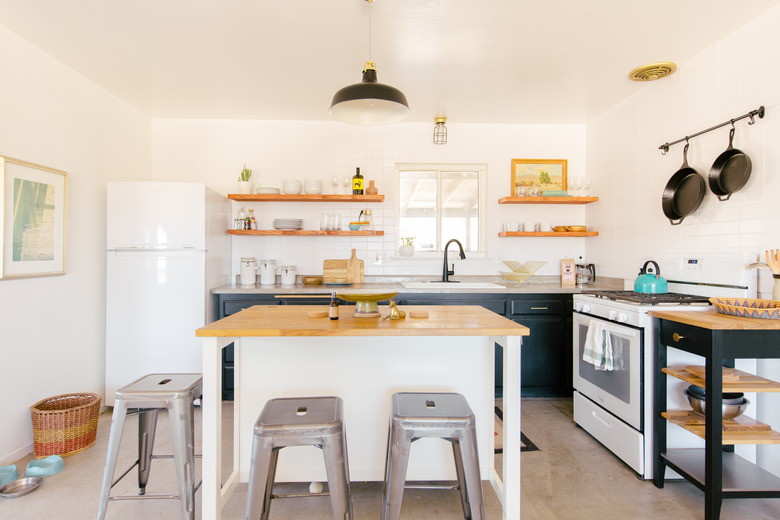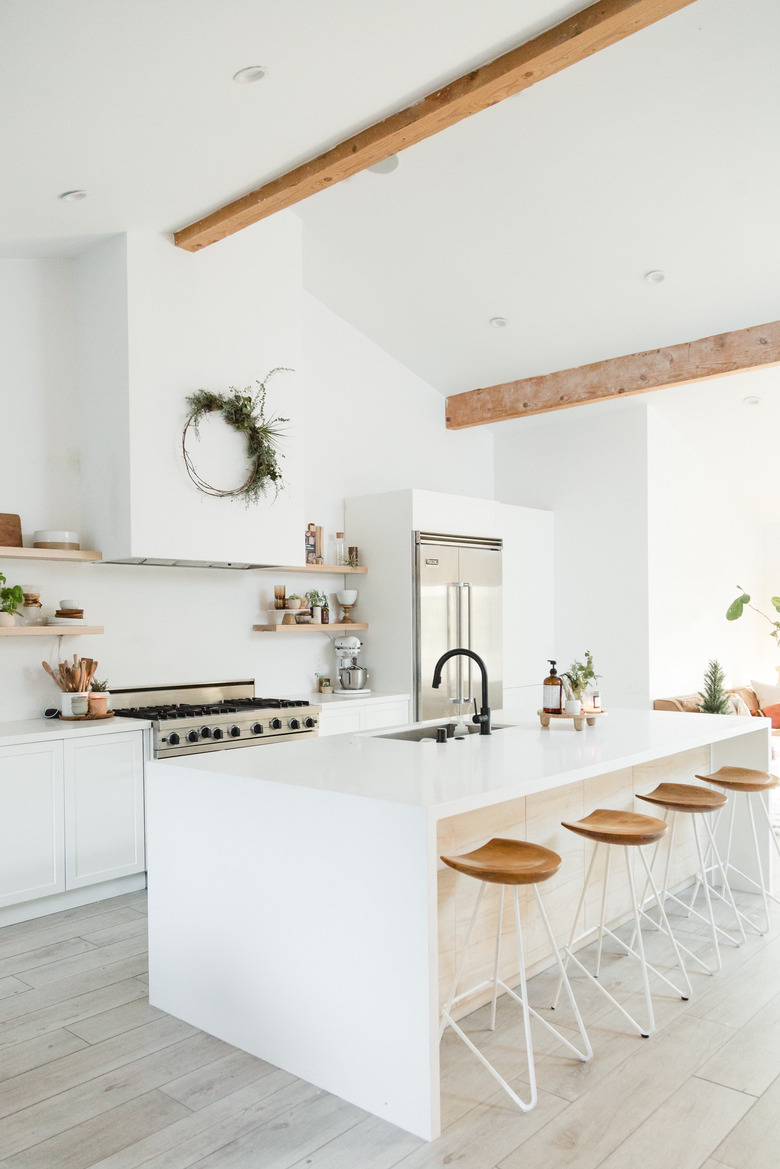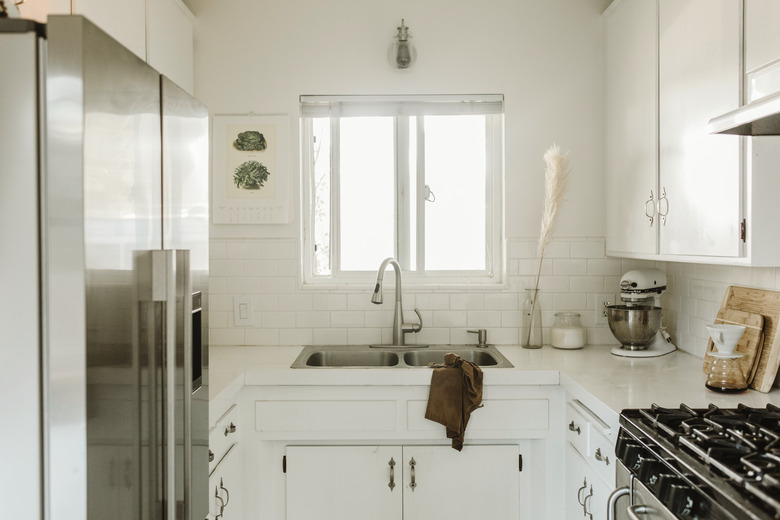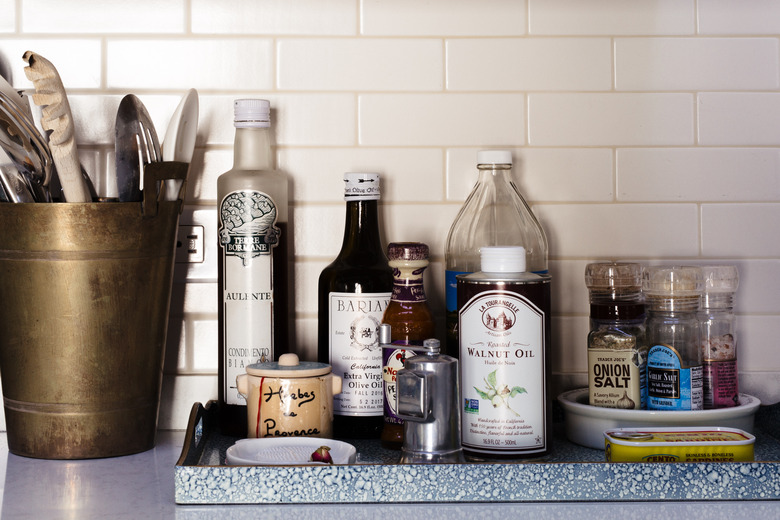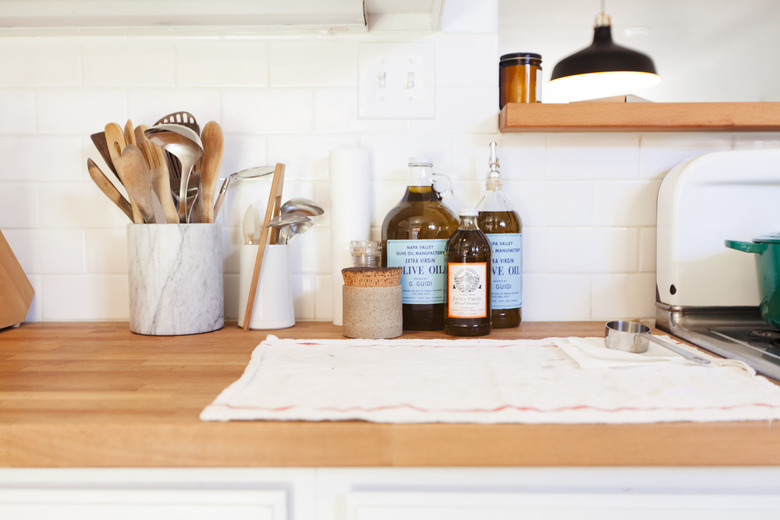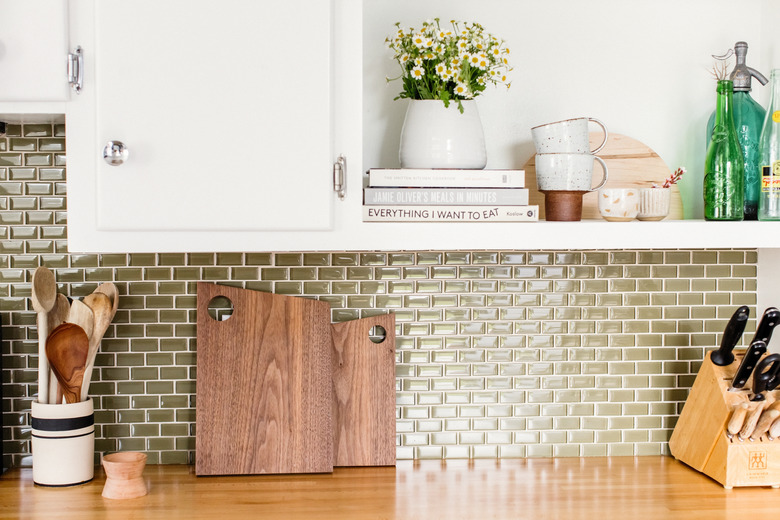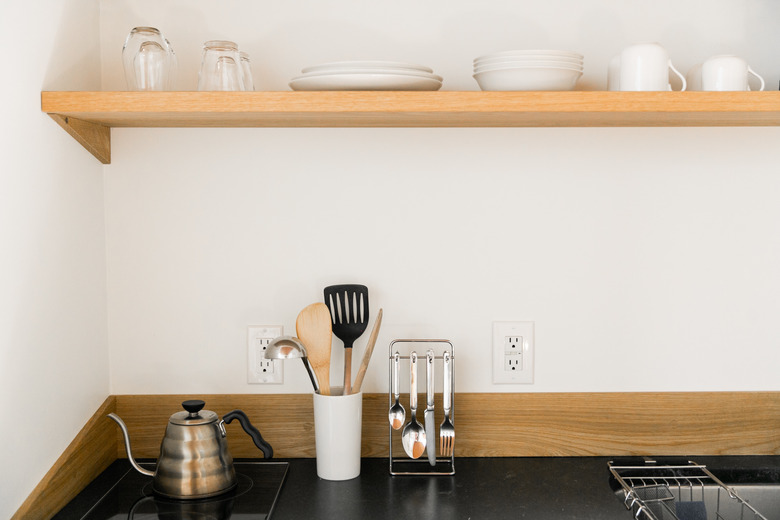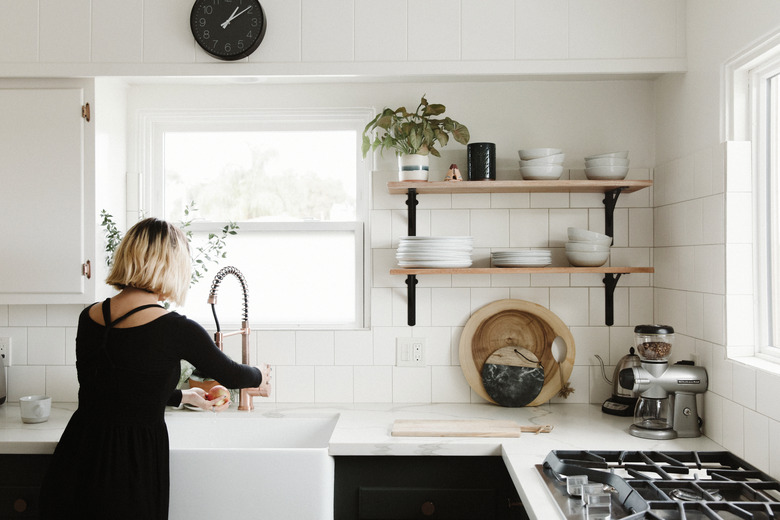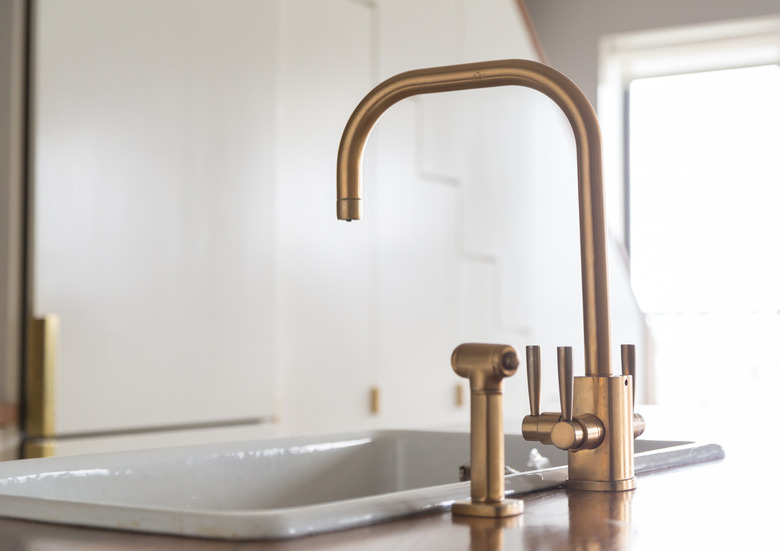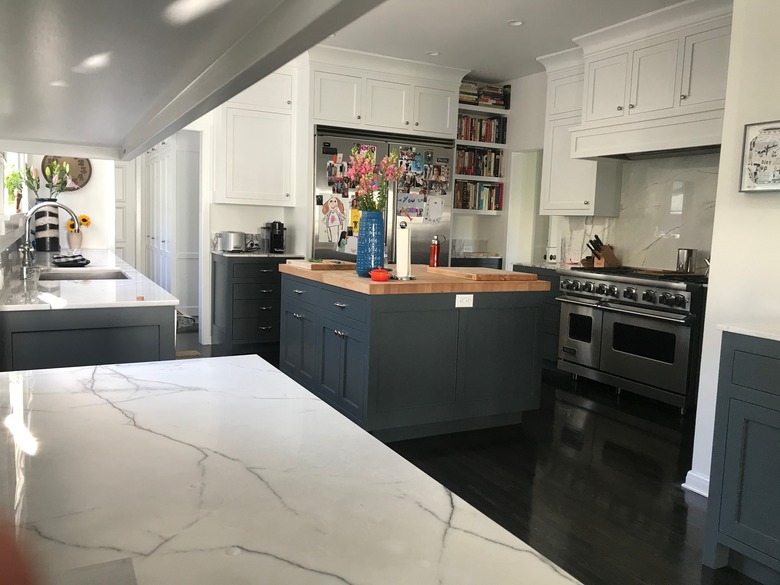Now We Want To Redo Our Kitchens After These Practical Tips From Award-Winning Chefs
What's more important in your kitchen: function or aesthetics? If you're like most of us, it's the latter ... but who wouldn't want a beautiful kitchen? Thing is, when more energy is invested in making the kitchen look good versus designing it for daily use, this could mean more time spent cooking and cleaning than necessary. How about striking a balance between the two?
We turned to three of L.A.'s most beloved chefs — Dora Herrera, Charles Olalia, and Jon Shook — to learn how they organize their home kitchens for easy meal prep (and minimal cleanup) to help you do the same. Thinking like a chef versus a host when approaching your kitchen could make life in the long run better for you and all who visit.
1. Design the flow of your kitchen for efficient cooking.
1. Design the flow of your kitchen for efficient cooking.
"When setting up a kitchen, whether at home or for a restaurant, the first thing we consider is the flow," shares Herrera of the James Beard Award–winning Mexican restaurant Yuca's in Los Feliz, now with a second location in Pasadena. Considering the original location is as small as they come — just 8 feet by 10 feet with three employees in it at a time — she certainly knows the challenges of working in compact spaces. But like most chefs, Herrera also finds herself at clients' homes or venues catering events, having to adapt to new layouts, large and small, on the spot.
She suggests you ask yourself these questions to evaluate your kitchen's flow: "The pot is boiling, where does it need to go? Is there anything in the way? What's the family traffic pattern leading into the kitchen? Will there be cross-traffic? How can you avoid an accident by organizing the kitchen in a way that flows naturally from station to station?" Especially if you have a large kitchen, Herrera says, "Remember to create a well-defined cooking area: the essential triangle of stove, sink, and fridge."
2. Put things you use often within easy reach — and consider your prominent hand.
2. Put things you use often within easy reach — and consider your prominent hand.
Chef Olalia, whose highly praised Filipino restaurant Ma'am Sir in Silver Lake recently made GQ's "Best New Restaurants in America" list and has received other national honors, says he places items he uses every day to the right of the stove because he's right-handed: "I'll always have my seasonings, those I would use every time, in Ball jars, because I feel Ball jars are the easiest way to put away and keep everything organized," Olalia shares. "I also have salt, pepper, and herbs by the right side of the kitchen, that's how I like to cook. And next to that would be a utensil bin, one or two of them: one of them for spoons, and one for whisks, and to my left would be my cutting board and a knife block."
3. Simplify or diversify your kitchen inventory based on your space and cooking habits.
3. Simplify or diversify your kitchen inventory based on your space and cooking habits.
"When someone like me is in someone else's house, I'm trying to design a menu that is capable to be executed in that house," says Shook, also a James Beard Award recipient with partner Vinny Dotolo, whose restaurants include Animal, Son of a Gun, Jon & Vinny's, and, with Ludo Lefebvre, Trois Mec, which was just awarded a Michelin star this month. "When you're designing a restaurant kitchen, you're trying to design based on a menu, or a format of a menu, that you're going to run your restaurant off of. And you put things in places that make it easier for you to execute." (More on that later.) "In a household kitchen, you inherited something from a place that you bought (or rent) that has limitations ... know what those limitations are."
Have you ever counted how many kitchen utensils you have versus ones you actually use? The number of plates you own versus silverware? Do those numbers make sense for you or the amount of space you have in your kitchen?
"The number one thing I tell people in the residential side: have what you need, and if you have what you need, it'll probably fit into your cabinets," he stresses. "If you got six burners at your house, you don't need more than eight pans. In an apartment, you only have room for a table of four, why do you need to have 24 silverware sets?"
Herrera agrees that limiting the number of pans — and being smart about how you store them — can make a huge difference for everyday cooking: "There's a huge annoyance factor in having to move a bunch of pans to get to the one I want, so I always aim to minimize the stack," she says. "Also remember to protect against scuffs and scratches by using pan protectors. If you have the space, the best thing to do is use a pot rack."
4. Even better: Become a master of one-pot cooking.
4. Even better: Become a master of one-pot cooking.
Olalia says that with the busy schedule he has, he had to simplify meal prep at home to find more time to enjoy other things: "My home kitchen has evolved tremendously through the years. When I first started cooking at home, I would use five or six pots, and then I'd just be so tired because I was just cleaning all the time," he says. "And now I'm the master of one-pot cooking."
Interestingly enough, while Olalia is pro one pot, he does find having an array of cutting boards a must: "I probably have about 10 cutting boards in different sizes. They range from the heavy-use, wooden block ones to a sushi board to a medium board, cheese boards," he shares, "and then all the way down to the simplest little 4-by-5-inch board that you get from Target ... for smaller cutting. And I find myself using those now more because it's easier to clean."
5. Only have appliances on the counter that you — and your roommates — actually use.
5. Only have appliances on the counter that you — and your roommates — actually use.
This may seem like a no-brainer, but look at your counter now and see if you follow this tip. You may have a sleek new blender or shiny panini press out, but when is the last time you used either? And consider what other members of your household need out that would make their lives easier.
For Shook, determining what's on the kitchen counter is a family affair, keeping his wife, Shiri Appleby, and their two kids in mind. They have a coffee machine because Appleby drinks coffee every day and a toaster readily available for their kids because "they love bread right now." Shook adds, "My son's obsessed with frozen waffles, and I let him eat them. I grew up eating frozen waffles — if that's what he wants, cool!"
Olalia considers what his toddler and wife need as well: "I have a 2-year-old, and he's kind of taken a lot of real estate on our kitchen counter, so life is ever evolving." The goal is to keep "as clear a counter space as possible" and kid-friendly, which means sticking to the essentials: "I have a tabletop convection oven, an espresso maker, and a tea kettle, an electric one — because those are things that we always use." But in the end, his wife "always has the last say, because she's in the kitchen more than me."
6. When possible, build in your essentials.
6. When possible, build in your essentials.
If you're in the position to design your kitchen to eliminate an appliance with something built-in, Shook recommends doing it. "At my last house I always had a hot-water kettle, but at my new house I have a hot-water spout, because when I was thinking about my kitchen, I was like, 'What do I regularly use? Man, I drink tea around three or four nights a week! I should have that readily available if I'm gonna know that I'm gonna use it all the time!'"
Both Shook and Olalia also stress the importance of having a big sink, since cleaning is as much a part of kitchen life as cooking. "Unfortunately, the sink [I have] at home is white and it's divided in two," Olalia says. "If I had a choice, I'd just have a big, almost like laundry-style sink that has a detachable faucet handle — that would be a very important splurge in the kitchen."
7. A movable trashcan is your friend — and a mini vac.
7. A movable trashcan is your friend — and a mini vac.
These days, so many kitchens are designed with trash bins kept out of sight, but for a chef, having one nearby or mobile is key, especially because it minimizes cleanup later.
"You know a lot of people at home set the trashcans underneath the sink. That drives me nuts," Olalia says. "I always like to have my trashcan, a little bucket, that's on the counter, so you can just scoop everything in there, or a 13-gallon one next to you that's always accessible, that's movable. Also, I always have a small broom and a little handheld vacuum in the close vicinity of the prep area instead of just going through towels and just wiping down [the counter]."
Herrera also says to have a trashcan "near your work area, not where you have to cross through another room to exit ... you can work on your 10,000 daily steps at the park!" she says. "Thinking ahead is the best way to make cleanup less of a chore: there's no dripping or dropping stuff on the floor getting to the trashcan."
8. Newspapers aren’t just for reading.
8. Newspapers aren't just for reading.
Don't throw those newspapers in the recycling bin just yet, Olalia has another great use for them: "I love keeping old newspaper in a drawer, because I use it almost like a catch bin for anything," Olalia notes. "Say I'm peeling onions or carrots. All these peels, instead of them going from the cutting board to a bowl, I just have a little piece of paper where it catches, and then you grab that and throw it away. I use newspaper also whenever I season anything. The name of the game is the less washing as possible."
9. Make the kitchen feel as comfy as the rest of your home.
9. Make the kitchen feel as comfy as the rest of your home.
Function and aesthetics aside, you also want your kitchen to feel welcoming. It is, after all, generally the room where most people spend their time. Whether that means displaying artwork by loved ones on the fridge or a family heirloom on the counter, personal "lived-in" touches like those warm up any space. "Design the kitchen to make sense with the rest of the home," Herrera says. "Don't just drop in a trending style you like, adapt it to your home's design." And remember, "Nothing stays pristine forever."
As for Shook, the kind of kitchen he wanted was clear to him from the get-go when he and Appleby started renovating theirs: "I told her, 'Look, I don't want to have a restaurant kitchen in my house, I have that at the restaurant. I want my house kitchen to feel like a house that your mom would be cooking in.'"
